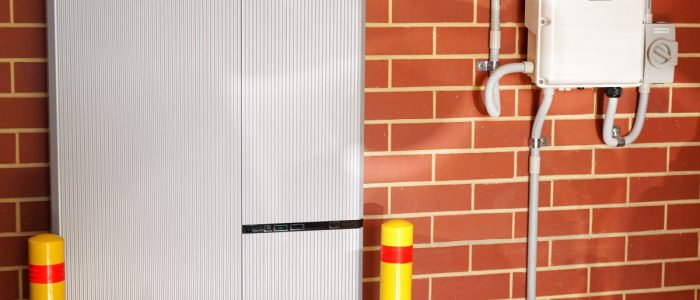Renewable energy solutions are innovative technologies that make sustainable energy storage essential and sometimes necessary for modern homes. Therefore, more homeowners are investing in battery backup systems to maintain power stability in an emergency or a brief power outage.
From emergency outages to harnessing renewable energy, battery backups offer convenience while promoting environmental consciousness. Two popular options in the battery storage market are the Tesla Solar Powerwall and traditional battery backup systems.
While both solutions serve the purpose of storing excess energy during production peaks, they differ significantly in their features, efficiency, and user experience. Learning about the differences between the Tesla Solar Powerwall and a traditional battery backup will enable homeowners and businesses to make informed decisions when choosing a backup power solution.
Design and Aesthetic Appeal
One of the most noticeable differences is the design and aesthetic appeal of the two options. The Tesla Solar Powerwall features a sleek, compact design that is perfect for modern homes that prioritize minimalism. It is ideal for wall mounting, allowing for efficient use of space inside and outside.
Traditional battery backups have a bulky and industrial design that emphasizes utility. It’s best to place these batteries in basements or garages for optimal storage. For homeowners, the Tesla Solar Powerwall aligns more seamlessly with a livable and stylish environment compared to traditional setups.
Energy Storage Capacity
Energy storage capacity plays a significant role in determining how long backup power can last. The Tesla Solar Powerwall offers impressive storage capacities, ranging from 13.5 kWh per unit, suitable for various needs. Its modular design supports multiple unit stacking, extending performance for larger energy requirements.
Traditional battery backups vary extensively in capacity, depending on their type and configuration, which can become limiting. While customizable setups are possible, compatibility challenges and inefficiencies tend to arise in larger configurations. The Tesla Powerwall’s higher capacity and scalability are key benefits for users with long-term energy goals.
Monitoring and Smart Features

Advanced monitoring and automation features distinguish the Tesla Solar Powerwall from traditional systems. It has user-friendly software that provides real-time insights into energy usage, consumption patterns, and storage capacity. Homeowners can control and monitor the system remotely via a mobile app, making it easier to manage.
Traditional battery backups often lack sophisticated monitoring tools and rely on manual oversight or basic indicators, making them less convenient for users who value technology-driven solutions. The compatibility of the Tesla Powerwall with smart home ecosystems enhances its appeal to tech-savvy homeowners.
Reliability During Power Outages
A reliable Tesla solar power wall ensures continuous electricity to essential devices and appliances when power outages occur. Its fast response time and significant storage capacity make it an indispensable resource during emergencies. It operates quietly, unlike many traditional systems that may use generators as a supplement.
Traditional battery backups often require additional equipment, such as inverters or manual intervention, to maintain operation. The lack of automation and integrated functionality can make them less dependable in critical moments. The Tesla Solar Powerwall offers one of the most polished emergency solutions today for user convenience and reliability.
Durability and Lifespan
Durability and lifespan are key considerations for any energy storage investment. The Tesla Solar Powerwall uses lithium-iron phosphate battery technology, which promises longevity and consistent performance over approximately 10 years or more. Its durable casing can withstand varying environmental conditions, from high heat to freezing temperatures.
Traditional battery backups, especially those of the lead-acid type, typically have shorter lifespans and require more frequent maintenance. Environmental factors can also lead to quicker wear and reduced storage efficiency over time. The Tesla Powerwall delivers robust durability for long-term reliability.
Compatibility With Solar Panels

One of the main differences between the Tesla Solar Powerwall and a traditional battery backup lies in how each system integrates with solar panels for renewable energy use. The Tesla Solar Powerwall specifically complements solar panel systems, enabling seamless energy storage and discharge. Its smart technology optimizes solar energy usage, reducing dependency on the grid.
Traditional battery backups can connect with solar panels, but often require additional components or accessories. These systems may struggle with efficiency losses due to incompatibility or a lack of advanced optimization. The Tesla Solar Powerwall offers a more intuitive connection, maximizing the benefits of renewable energy investment.
Environmental Impact
The Tesla Solar Powerwall’s environmental sustainability sets it apart from many traditional options. Tesla’s batteries prioritize energy efficiency, reducing environmental degradation from production to operation. Pairing them with renewable energy sources, such as solar panels, amplifies their eco-friendly impact.
Traditional systems tend to have a higher negative environmental footprint. Their production, use, and disposal pose challenges for eco-conscious users. Opting for a Tesla Solar Powerwall can significantly lower the ecological impact of energy storage systems.
Installation and Maintenance
Professional, certified technicians must handle the installation of a Tesla Solar Powerwall to ensure a hassle-free experience. Its modular design makes installation straightforward, while its low-maintenance nature minimizes user involvement over time. A professional installation will ensure the system functions flawlessly and efficiently.
Traditional battery backups involve more complex installation processes, depending on configuration and compatibility. Maintenance needs are often more extensive, especially for lead-acid systems, due to the need for regular water checks and replacements. Homeowners seeking a convenient solution will find the Tesla Powerwall to be the better option.
Cost and Return on Investment
Upfront costs are higher for the Tesla Solar Powerwall, but its long lifecycle and efficiency justify the price. Over time, the reduction in utility bills and energy independence contributes to a worthwhile return on investment.
Traditional battery backups are initially more affordable, but their limited lifespan and lower efficiency diminish their long-term benefits. Frequent battery replacements and higher maintenance costs can make traditional systems less cost-effective.
Choosing between a Tesla Powerwall and a traditional battery backup system depends on your specific energy requirements and long-term goals. The Tesla Powerwall stands out with its advanced technology, seamless integration with solar systems, and smart energy management capabilities, making it a highly efficient solution for modern energy needs.
While the initial investment may be higher, its long-term cost-effectiveness, lower maintenance, and sustainability benefits make it a worthy consideration for those seeking a reliable and eco-friendly solution. Traditional battery backup systems might be more accessible initially and suitable for simple energy storage purposes, but they often lack the Tesla Powerwall’s sophistication and efficiency.
By weighing factors such as upfront cost, scalability, technological features, and environmental impact, you can select the energy backup solution that aligns best with your priorities.


